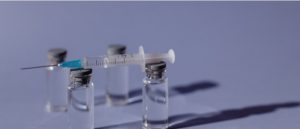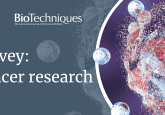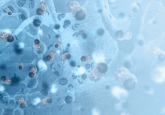Researchers reversibly activate drug molecules with visible green light

Photosensitive drug molecules that can be activated by visible green light could lead to novel precision therapeutics to treat cancer and other diseases.
Researchers at the Institute for Advanced Chemistry of Catalonia (IQAC), part of the Spanish National Research Council (CSIC; Barcelona, Spain), have developed photosensitive molecules that can be reversibly activated by an external green light source to target drugs more effectively. Precision therapies could reduce the impact on healthy cells caused by chemotherapies and reduce their side effects.
Cancer drugs are not effective at distinguishing between healthy and cancerous cells, leading to unwanted and toxic side effects that limit the therapeutic window. “Photosensitive drugs, whose activity can be precisely controlled with external light in a reversible manner, can solve this problem, since they provide a great control of the site of action and for a desired time, thus decreasing the side effects and increasing their efficacy,” explained Laia Josa Culleré, the lead author of the study.
The researchers focused on developing a drug to inhibit a common oncological target, histone deacetylase (HDAC) enzymes. When dysregulated, HDAC enzymes prevent the expression of genes, including tumor suppressors, which increases the likelihood of cells becoming cancerous. Currently, conventional HDAC inhibitors have low selectivity and cause toxic side effects.
Photosensitive molecules are an attractive approach for targeting antitumor drugs because their activity can be controlled by changing parameters including the wavelength of light used, intensity and exposure time. When illuminated, photosensitive molecules change their structure to target specific receptors, enabling drug delivery to be controlled externally.
 A vaccine can kill and prevent brain cancer using an unusual approach
A vaccine can kill and prevent brain cancer using an unusual approach
A dual-action cancer vaccine that both eliminates established tumors and induces long-term immunity shows promising results in a mouse model study of brain cancer glioblastoma.
The researchers of the study designed molecules that could be reversibly regulated by light and are based on existing drugs that target HDACs. The initial results showed that the drug molecules inhibited HDACs when activated by light and remained inactive in the dark. However, these molecules needed UV light for activation, which damages cells and has low penetration in biological tissues. The researchers optimized the molecules so they could be activated by visible green light.
“One of the strengths of the study is that these molecules are activated with visible light (green), whereas almost all the molecules that are described against cancer are activated with ultraviolet light, which prevents the approach from progressing to in vivo tests and patients,” explained Amadeu Llebaria, the co-author of the study.
The researchers verified the activity of these photosensitive molecules in four cancer cell lines: cervix, breast, leukemia and colon. An increase in cancer cell death was observed after illumination with green light; no effect was observed when the cell lines were in the dark.
As these molecules can be activated by visible light, the researchers now hope to study their effect in vivo, in zebrafish or mice. They are planning to see the effect of selectively illuminating the tumor area to activate the drug and investigate if it will remain in its inactive form in the rest of the body and avoid damaging healthy tissues.
Culleré concluded, “we believe that the study of these photosensitive molecules is important to establish an in vivo proof of concept on the use of photopharmacology to treat cancer more effectively and safely.”





